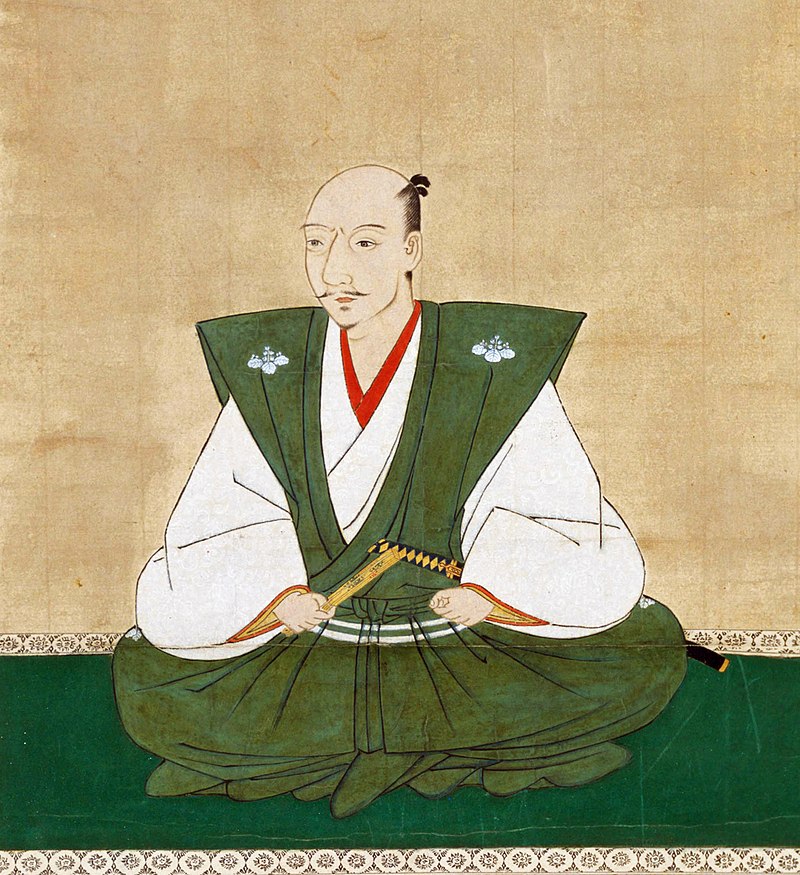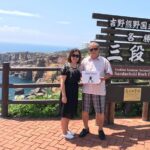Oda Nobunaga (織田 信長) was a powerful daimyō (feudal lord) of Japan during the late 16th century. He is known for his efforts to unify Japan during the late Sengoku period and successfully gained control over most of Honshu. Nobunaga is regarded as one of three unifiers of Japan along with his retainers Toyotomi Hideyoshi and Tokugawa Ieyasu.
Nobunaga was born in 1534 in Owari Province, Japan. He was the eldest son of Oda Nobuhide, a minor warlord with meager land holdings. Nobunaga inherited his father’s position and began to expand his territory by defeating neighboring daimyō. In the 1560s, he launched a war against other daimyō to unify Japan, which led to his reputation as the first “Great Unifier” of Japan.
Despite his achievements, Nobunaga’s life was cut short when he was betrayed by one of his own retainers, Akechi Mitsuhide, in 1582. Nobunaga was forced to commit seppuku (ritual suicide) at Honnō-ji temple in Kyoto. However, his legacy lived on through his successors Toyotomi Hideyoshi and Tokugawa Ieyasu, who continued his work to unify Japan and establish a lasting peace.
Early Life
Oda Nobunaga was born on June 23, 1534, in Nagoya, Owari Province, Japan. He was the second son of Oda Nobuhide, a minor daimyō with territory in Owari Province. Nobunaga’s childhood was marked by the constant conflict between his father and his uncle, Oda Nobutomo, who was supported by the Imagawa clan. In 1547, when Nobunaga was 13 years old, his father died, and Nobutomo tried to take control of the Oda clan. Nobunaga and his younger brother, Oda Nobuyuki, were sent into exile, but they returned a year later with the help of their uncle, Oda Nobumitsu.
After his return, Nobunaga began to assert his authority over the Oda clan. He was an intelligent and innovative leader, and he quickly gained the support of his retainers. In 1551, he married Nōhime, the daughter of Saitō Dōsan, a powerful daimyō in Mino Province. The marriage was a political alliance that helped Nobunaga to expand his territory.
During the 1550s, Nobunaga fought a series of battles against the Imagawa clan and other neighboring daimyōs. In 1560, he achieved a decisive victory at the Battle of Okehazama, in which he defeated an army led by Imagawa Yoshimoto, one of the most powerful daimyōs in the region. This victory established Nobunaga as a major player in the political landscape of Japan.
Rise to Power

Oda Nobunaga was born in 1534 in Owari province, Japan. He was the second son of Oda Nobuhide, a minor daimyō with land in Owari Province. Nobunaga’s father died in battle in 1551, and Nobunaga succeeded him as the head of the Oda clan.
At the time, Japan was divided into many small territories, each ruled by a daimyō. The country was in a state of constant warfare, with daimyōs fighting each other for power and control. Nobunaga, however, had a different vision. He wanted to unify Japan under his rule and put an end to the constant warfare.
Nobunaga began his rise to power by defeating rival daimyōs and expanding his territory. In 1560, he won a decisive victory at the Battle of Okehazama, where he defeated an army ten times the size of his own. This victory made him a major player in Japanese politics and earned him the respect of other daimyōs.
Over the next few years, Nobunaga continued to expand his territory and consolidate his power. He was a ruthless and innovative leader, using new tactics and weapons to defeat his enemies. He also made alliances with other daimyōs, using diplomacy as well as force to achieve his goals.
By 1568, Nobunaga had become the most powerful daimyō in Japan. He had defeated many of his rivals and had established himself as a force to be reckoned with. However, his ultimate goal of unifying Japan was still far from complete.
Military Campaigns
Oda Nobunaga is known for his innovative military tactics and his role in unifying Japan. He was a skilled strategist and a ruthless leader who was not afraid to take bold risks. He was able to achieve many military victories during his reign, which helped him gain power and consolidate his control over Japan.
One of Nobunaga’s most famous military campaigns was the Battle of Okehazama in 1560. In this battle, Nobunaga faced a much larger army led by Imagawa Yoshimoto. However, Nobunaga was able to use his knowledge of the terrain and his superior tactics to defeat the enemy army. This victory was a significant turning point in Nobunaga’s career, as it helped him gain recognition and establish himself as a powerful daimyo.
Another notable military campaign led by Nobunaga was the Siege of Inabayama Castle in 1567. This castle was held by Saito Tatsuoki, who was a rival of Nobunaga. Nobunaga was able to use his military expertise to lay siege to the castle and eventually capture it. This victory helped Nobunaga expand his territory and consolidate his power in the region.
Nobunaga was also known for his use of firearms in battle. He recognized the potential of firearms as a powerful weapon and invested heavily in their development and use. His armies were equipped with arquebuses, which gave them a significant advantage over their enemies. This allowed Nobunaga to win many battles and establish himself as a dominant military force in Japan.
Overall, Nobunaga’s military campaigns were characterized by his innovative tactics, his willingness to take risks, and his use of firearms. These campaigns helped him gain power and establish himself as a dominant force in Japan, laying the foundation for the unification of the country under his successors.
Death and Legacy
Oda Nobunaga met a tragic end on June 21, 1582, when he was betrayed by his vassal, Akechi Mitsuhide, who attacked him at Honnō-ji temple in Kyoto. Nobunaga was forced to commit seppuku, a ritual suicide, to avoid being captured by his enemies. His death marked the end of an era in Japanese history, and it sent shockwaves throughout the country.
Despite his violent end, Oda Nobunaga is remembered as one of the greatest military commanders in Japanese history. He was a visionary leader who united most of Japan during his lifetime, and his tactics and strategies are still studied and admired today. He was also a patron of the arts, and he supported the development of tea ceremony, Noh theater, and other cultural traditions.
After his death, Oda Nobunaga’s legacy lived on through his devoted followers, who continued to fight for his vision of a unified Japan. His son, Oda Nobutada, and his most loyal vassals, Toyotomi Hideyoshi and Tokugawa Ieyasu, carried on his work and eventually succeeded in unifying Japan under the Tokugawa shogunate.
Today, Oda Nobunaga is a popular figure in Japanese popular culture, and he is often depicted in movies, anime, and video games. His legacy continues to inspire people around the world, and his name is synonymous with power, strategy, and leadership.



